Cirsium flodmanii (Flodman's Thistle) - photos and description
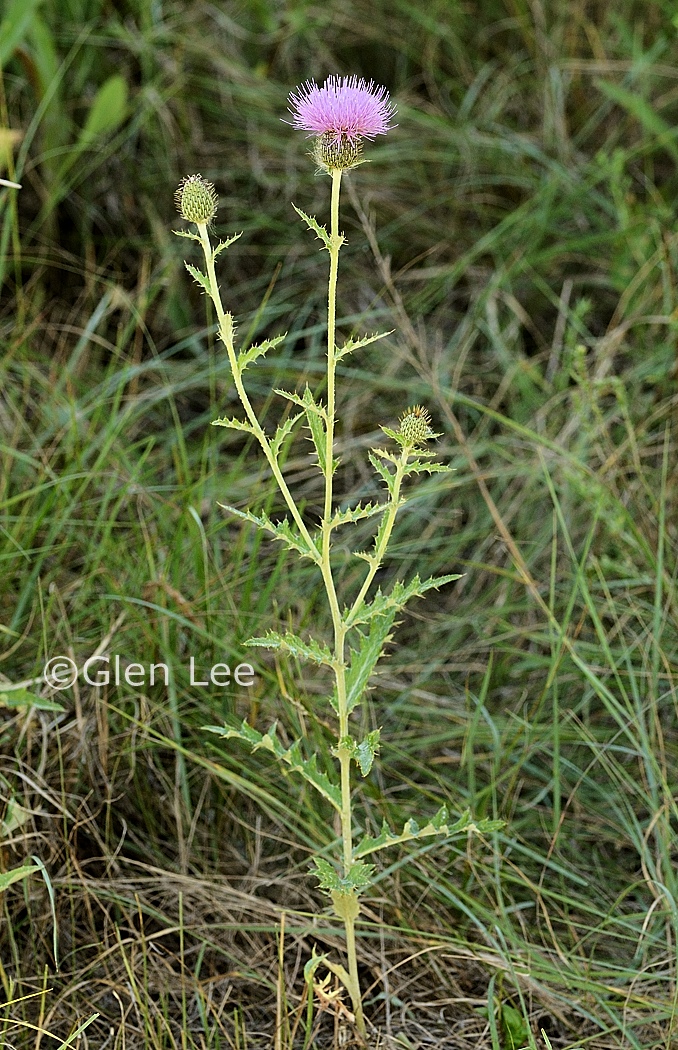
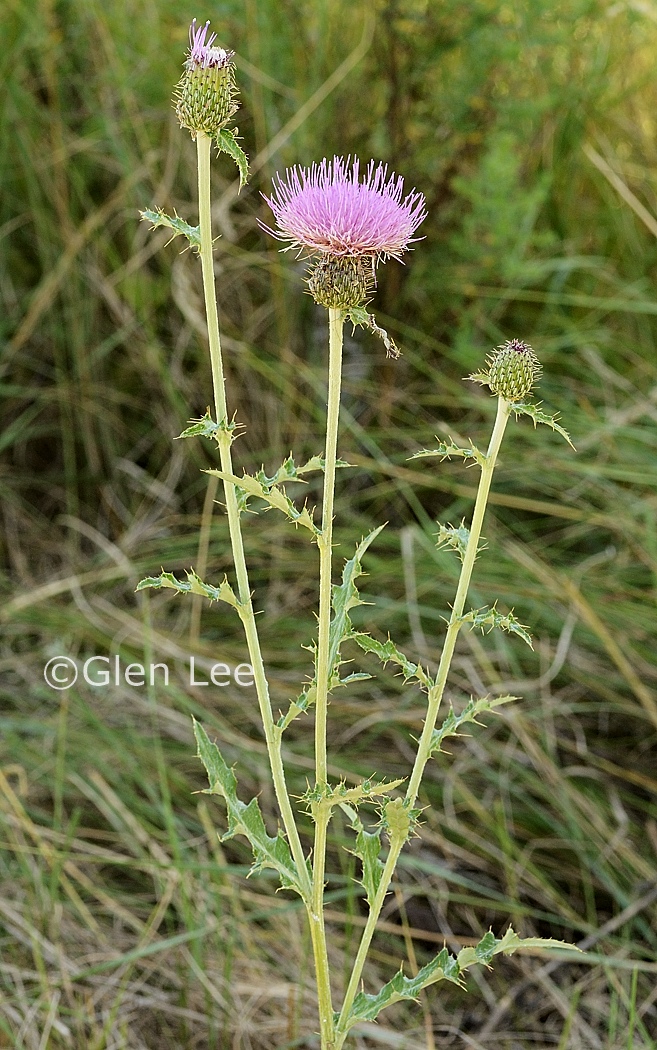
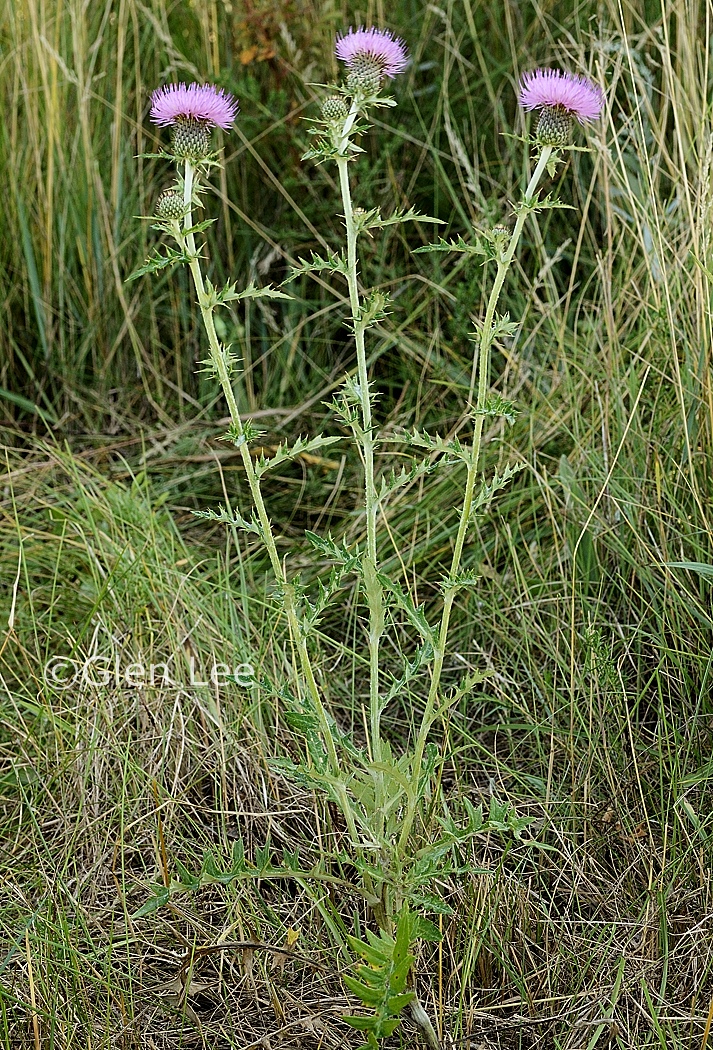
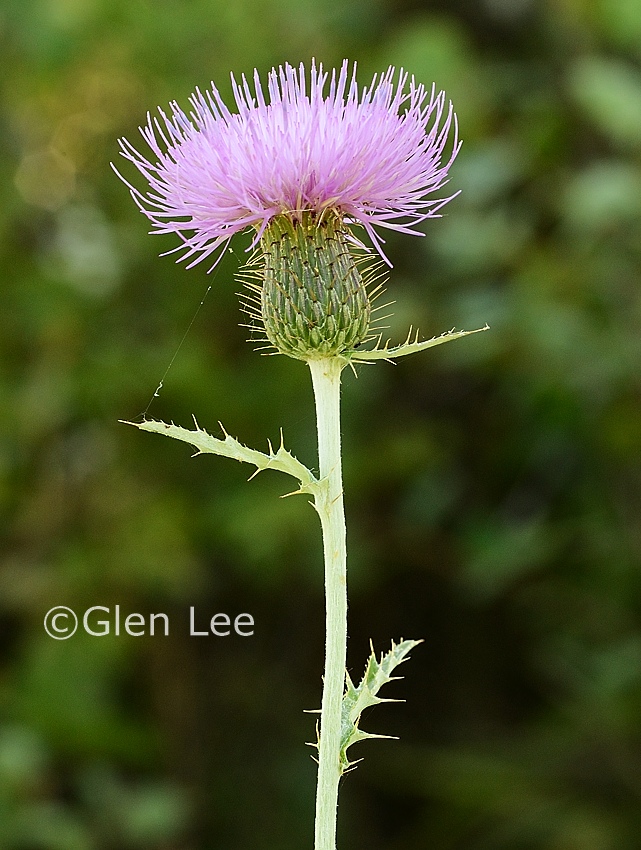
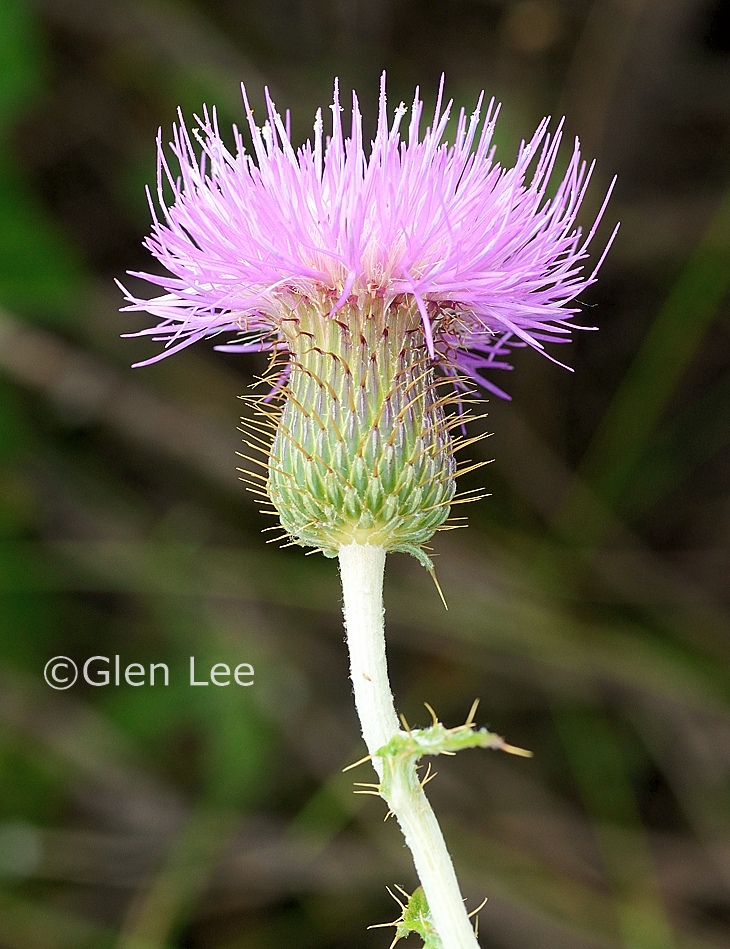
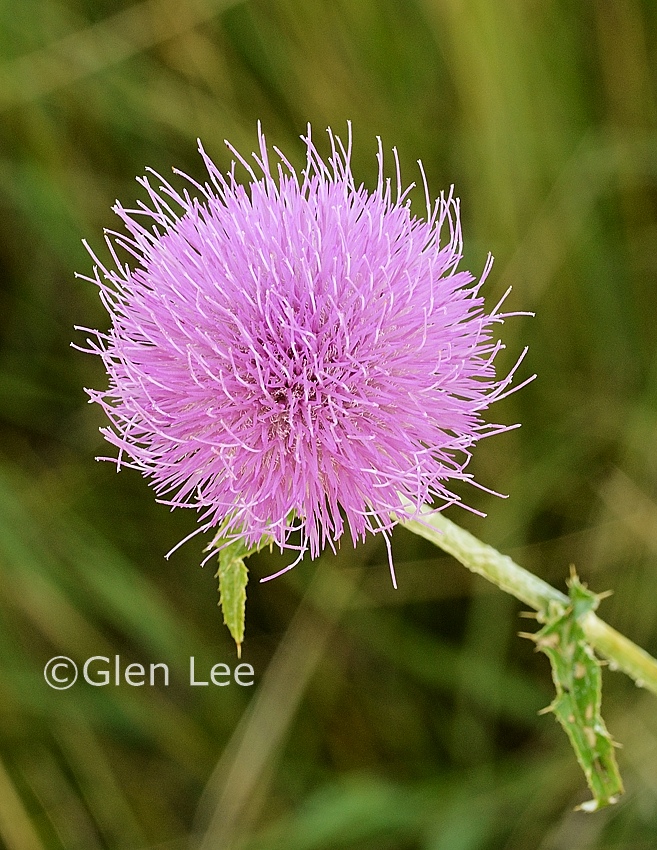
Looking straight down on flower head in above photo.
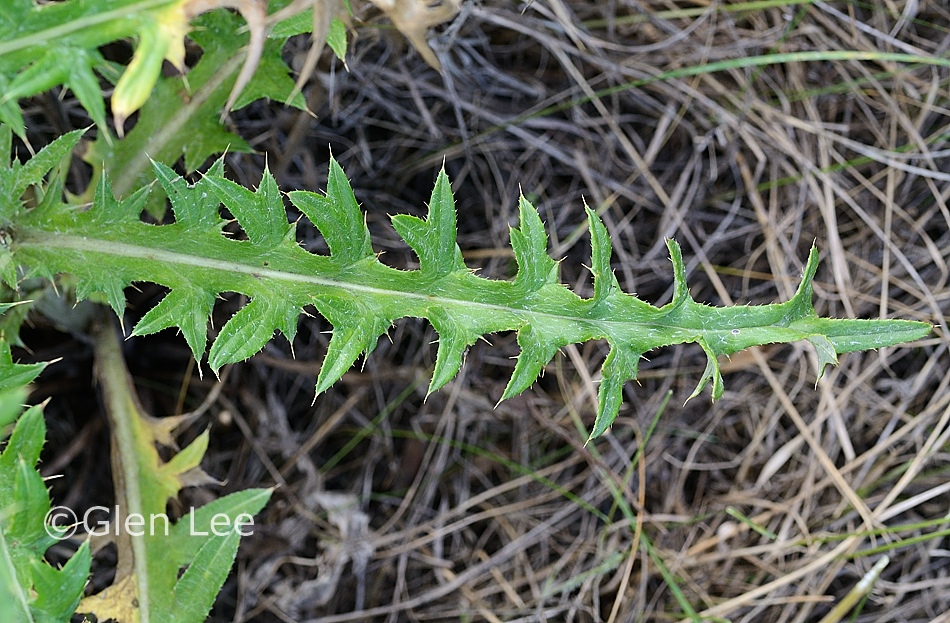
Lower stem leaf on a big plant.
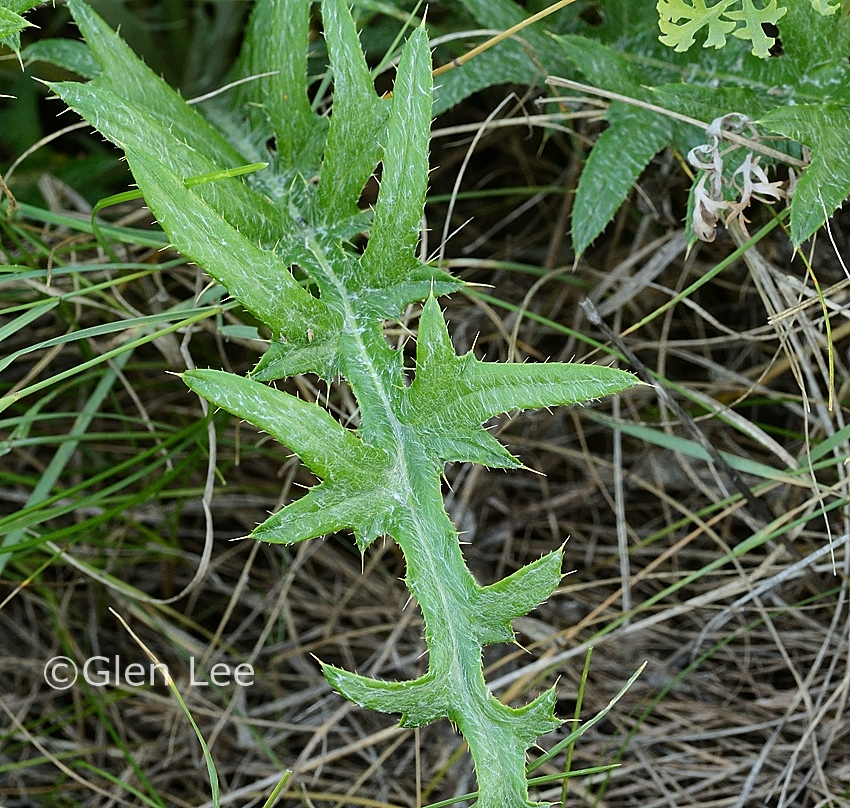
Lower leaf on a large plant, leaves bifid or sometimes trifid.
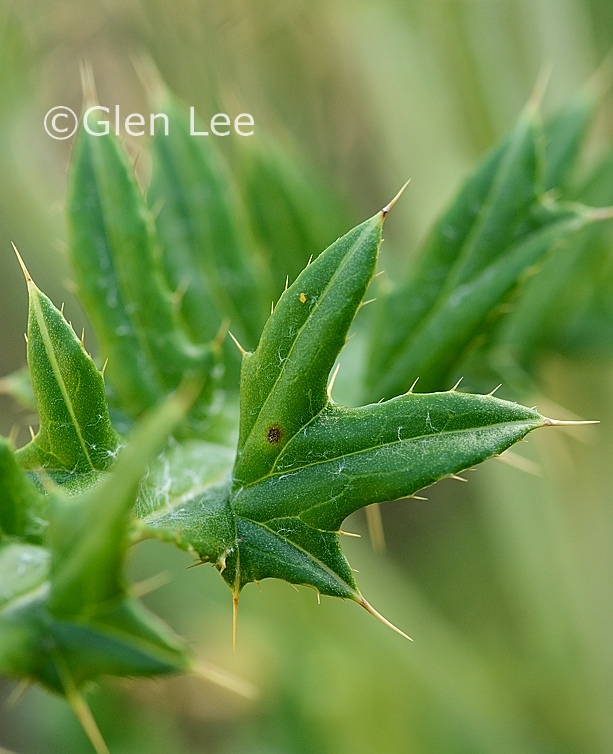
Leaves bifid or sometimes trifid; uppermost lobe segment at a near
right angle to the leaf blade.
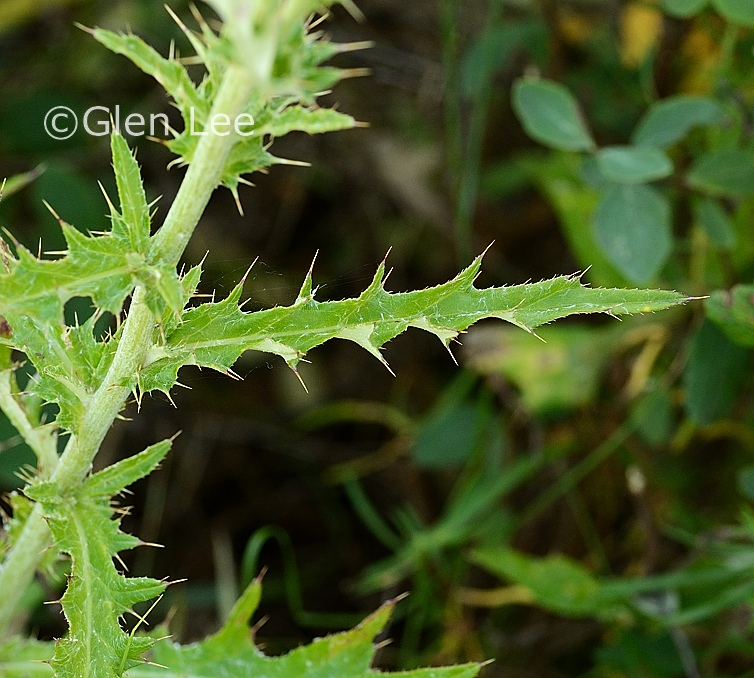
Leaf mid to upper stem; lobes not crowded together, uppermost lobe
segment at a near right angle to the leaf blade.
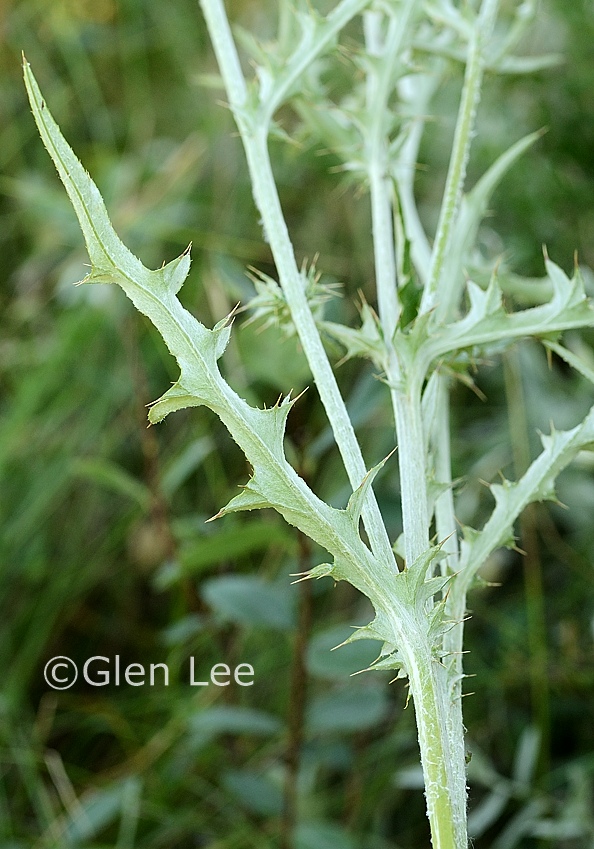
Leaf underside in above photo.
Origin: Native.
General: Plants with an upright, branching growth habit, usually single-stemmed. Stems towards the top are white woolly, bigger plants have green and white striping on their lower stems.
Flowers: Flower heads few to solitary, magenta in colour, with a slight scent. Involucre with numerous, overlapping bracts, the bracts spine-tipped, the spines spreading. Flower head measured to 5 cm diameter, involucre measured at 18 mm wide and 25 mm high.
Leaves: Very prickly, alternate, lanceolate, deeply cleft into lanceolate spiny lobes, bifid or trifid, the uppermost segment often at a near right angle to the leaf blade. Top of leaves dark green, sometimes with a white stripe running half the length of the blade. Bottom of leaves white-woolly. Top of leaves with some woolly hairs. Leaves reduced in size upwards. Leaf lobes generally less than 7 mm wide, lobes not crowded together on the blade.
Height: Height listed in Budd's Flora to 50 cm, we measured plants to 50 cm tall.
Habitat: Moist prairie and valleys.
Abundance: Common.
Similar species: This species is very similar to
Cirsium undulatum. To distinguish
between the two:
- For C. flodmanii the uppermost lobe segment is at
a near right angle to the blade of the leaf. The leaves of C.
flodmanii are shiny green on top with slight pubescence and
are white and very pubescent below. C. undulatum is
sometimes called gray thistle because it has a white cast, with the top and
bottom leaf surfaces very pubescent. The leaves of
C. undulatum are less deeply lobed than C. flodmanii. C.
undulatum
is generally found in drier locations than those occupied by C.
flodmanii.
(The Thistles of North Dakota, Rodney G. Lym and Katheryn M. Christianson).
- Leaf lobes generally less than 7 mm wide for C. flodmanii, and generally greater than 7 mm wide for C. undulatum (Flora of Alberta).
- The lobes of C. flodmanii narrowly lanceolate, the ultimate leaf lobes of C. undulatum ovate-triangular (Common Plants of the Western Rangelands, Volume 3 Forbs).
The difference in the lobes of the leaves of the two species is shown below in the leaves of 1st year rosettes. The leaves of C. undulatum have ovate lobes crowded along the leaf blade (lobes measured to 20 mm wide). The leaves of C. flodmanii has linear to lanceolate lobes (lobes measured to 5 mm wide), not crowded along the blade.
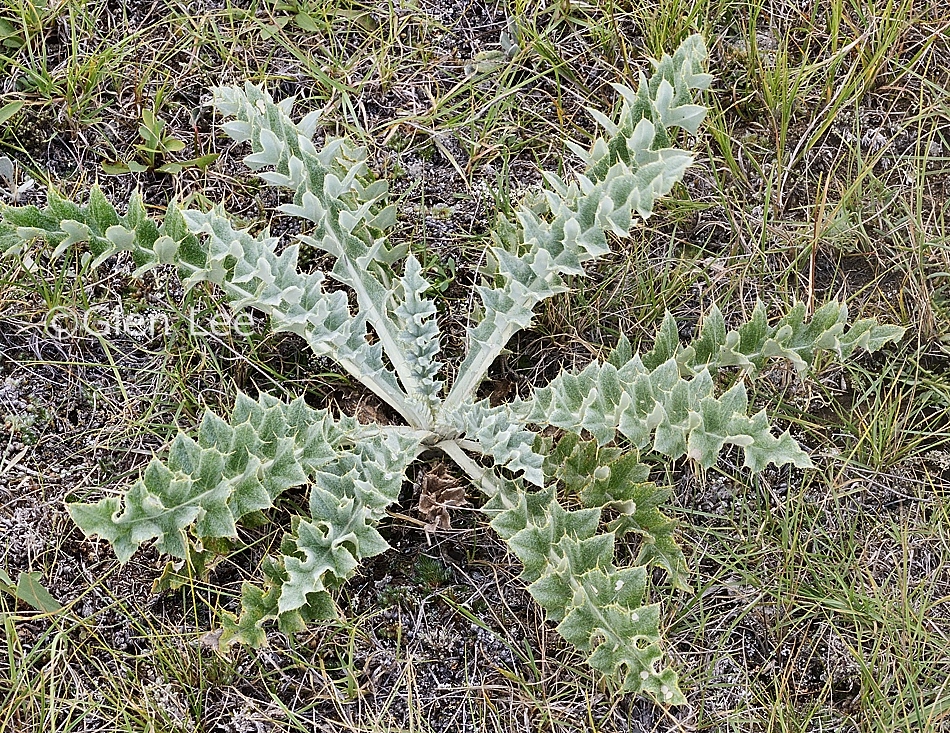
C. undulatum - leaves of 1st year rosette, lobes ovate and crowded
along the blade.
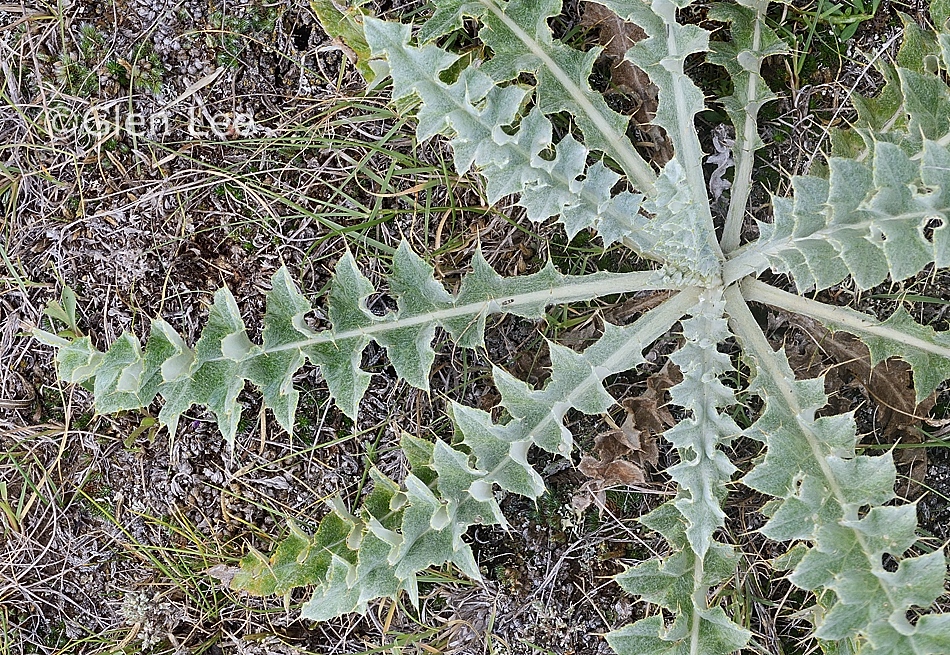
C. undulatum - leaves of 1st year rosette, lobes ovate and crowded
along the blade.
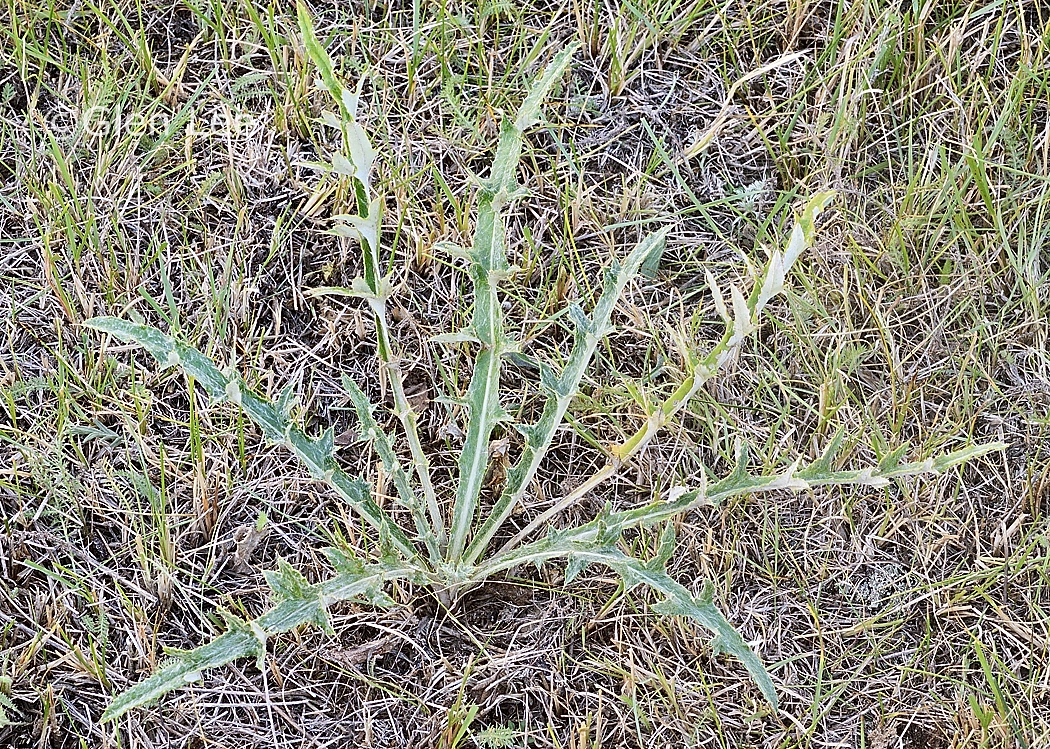 C.
flodmanii - leaves of 1st year rosette, lobes narrow and not crowded
along blade.
C.
flodmanii - leaves of 1st year rosette, lobes narrow and not crowded
along blade.
When and where photographed: We took the above photos August 2nd moist grassland in the Qu'Appelle Valley, about 30 km north of our home in Regina, SK.